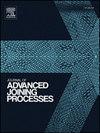Advances in induction brazing of copper and dissimilar metals: Challenges and emerging trends
IF 4
Q2 MATERIALS SCIENCE, MULTIDISCIPLINARY
引用次数: 0
Abstract
Induction brazing is emerging as a promising technique in current manufacturing processes, particularly noted for its effectiveness in the precise control of heat input, localized heating and rapid processing time. This joining technique is advantageous in industries such as heat pump and refrigeration manufacturing, which require precise and effective joining techniques, particularly for brazing copper and dissimilar metal pipes. Additionally, this technique is environmentally friendly, energy-efficient, cost-effective, and well-suited for automation.
However, studies have shown that induction brazing of copper and dissimilar metals presents several significant challenges, including thermal distortion-induced cracks due to unoptimized heat input and porosity defects stemming from inadequate filler metal penetration and suboptimal gap size between the joint, these issues can compromise joint integrity, as well as system durability and sustainability. Furthermore, the incompatible thermophysical properties of dissimilar materials and interconnectors pose substantial difficulties in achieving complete metallurgical bonding. The formation of undesirable microstructures, such as hard and brittle intermetallic compounds (IMCs), can further affect the structural, mechanical, and thermal properties of brazed joints.
This review systematically examines the effects of the most significant induction brazing process parameters on joint performance. Specifically, the effects of heat input, geometrical gap size between the joints, and composition of the filler material on the quality of brazed joints are discussed. Moreover, this review explores the induction brazing of copper with dissimilar metals, including copper with aluminum and copper with stainless steel. The impact of key process parameters on the joint quality of these materials was analyzed. Additionally, opportunities, challenges, and strategies to mitigate the challenges in induction brazing of copper and dissimilar metals are presented induction brazing are presented along with future research directions.
铜和异种金属感应钎焊的进展:挑战和新趋势
感应钎焊在当前的制造工艺中是一种很有前途的技术,特别是其在精确控制热输入、局部加热和快速加工时间方面的有效性。这种连接技术在热泵和制冷制造等行业中是有利的,这些行业需要精确和有效的连接技术,特别是钎焊铜和异种金属管道。此外,该技术对环境友好,节能,成本效益高,非常适合自动化。然而,研究表明,铜和异种金属的感应钎焊存在几个重大挑战,包括由于未优化的热输入而导致的热变形引起的裂纹,以及由于填充金属渗透不足和接头之间的间隙尺寸不理想而导致的孔隙缺陷,这些问题可能会损害接头的完整性,以及系统的耐久性和可持续性。此外,不同材料和互连体的不相容的热物理性质给实现完全的冶金结合带来了很大的困难。不良组织的形成,如硬脆的金属间化合物(IMCs),会进一步影响钎焊接头的结构、机械和热性能。本文系统地考察了感应钎焊工艺参数对接头性能的影响。具体地说,讨论了热输入、接头之间的几何间隙大小和填充材料的组成对钎焊接头质量的影响。此外,本文还探讨了铜与不同金属的感应钎焊,包括铜与铝和铜与不锈钢。分析了关键工艺参数对接头质量的影响。此外,提出了铜和异种金属感应钎焊的机遇、挑战和缓解挑战的策略,并提出了感应钎焊的未来研究方向。
本文章由计算机程序翻译,如有差异,请以英文原文为准。
求助全文
约1分钟内获得全文
求助全文

 求助内容:
求助内容: 应助结果提醒方式:
应助结果提醒方式:


